LD: Future Siren
Third-Person Shooter, Mystery, Action, Choice Matter
Notes:
This level design project was made streamlined as the game writing of Future Siren was made, so the changes from the game writing immediately affect the workflow and the level design progress.
The final output of this project mainly focused on narrative, level design, environment art, and lighting aspects, so the programming aspect was not the priority.
There are live-view version One Pager at the bottom of the page.
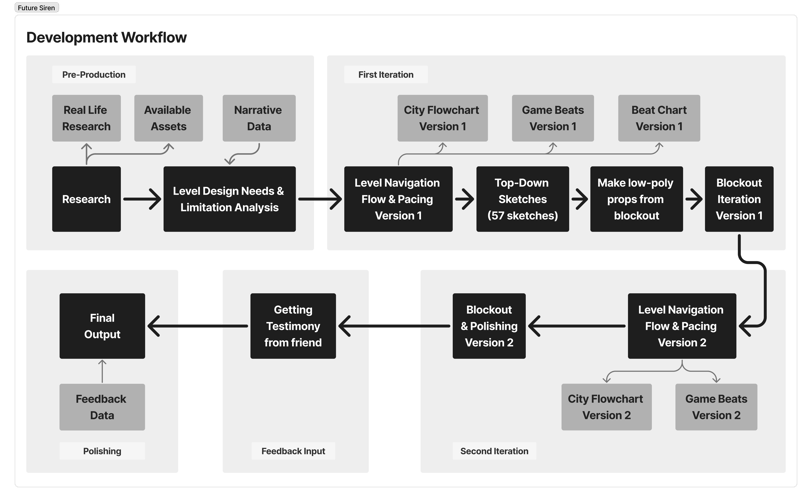

Real-Life Research about Seashore City
Input: YouTube videos, Pinterest pictures, Google Maps
Output: type of city and the road, harbor characteristics, there are no area boundaries IRL, how location from the big city impacts the population size and the city.
(Some) Notes:
The harbor and city shapes depend on the natural terrain. Humans follow and adapt to it, not change it.
Modern cities and rural areas have different characteristics. It also affects the building placements, walk areas, and the road.
The harbor size and quality depend on the city near it, especially if it’s not an active area for sea transportation for business.
Available Assets for Unreal
Input: free assets at Unreal Marketplace & Quixel Bridge
Output: decide the architecture style of the city, change the harbor area into a seashore cliff, and decide on art and blockout limitations.
(Some) Notes:
There are various types of building architecture, but most of them are modular assets that need to be assembled.
There is a ship asset, but there are a lot of natural assets on the beach.
The assets that produce light are limited to a few streetlights, traffic lights, and lamps, so the placement of the props must be optimized.
Research Phase
Needs & Limitations Analysis
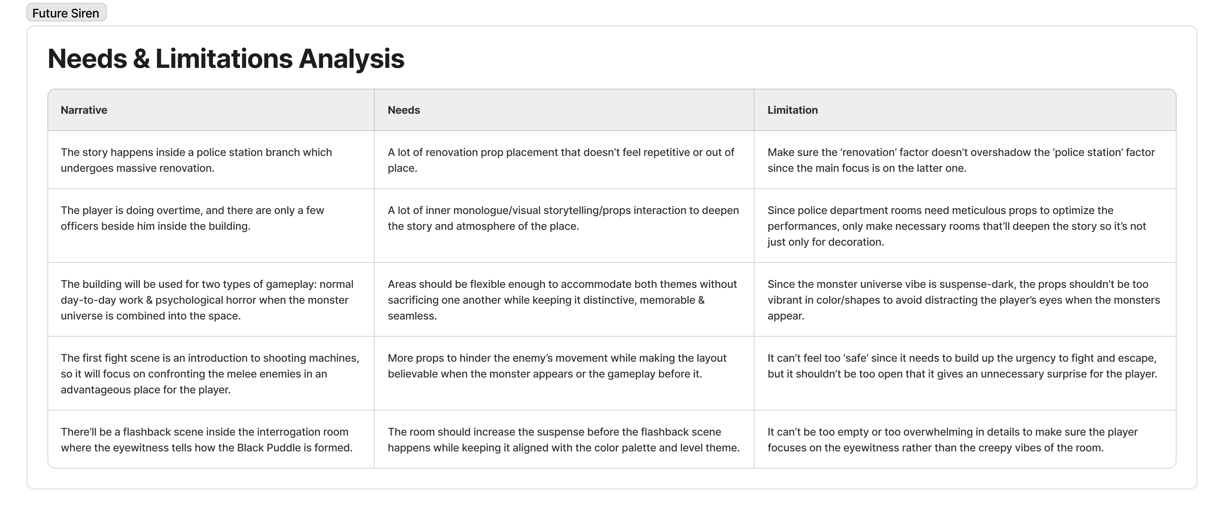

The level design was built based on a story/narrative foundation rather than game mechanics. To make sure the level design has a proper working scope, I made an analysis that'll be used as the main guide throughout the development process.
Game Inspiration
This project was inspired by Control (shooting, telekinesis, and fast-run mechanics) and Hogwarts Legacy (interconnected branching narrative in combat gameplay), so the level design must accommodate the branching storyline with different explorable areas and medium/fast-paced combat that has shooting, fast-run, and telekinesis mechanics.
After some analysis, I realized the core gameplay in this phase is combat. So, I was thinking, “Even if it’s a branching story, the mission will be the same— killing monsters. So, I only need to make one mission flow but write it in different environments to show the differences between each route.”
In this first concept, I focused on incorporating the nature with the civilized area to make it interesting to explore. Because a seashore city tends to be related to beach areas, I decided to differentiate it from the others by making it into a cliffside area. Considering the city has big exploration areas, the other areas were made to be straightforward in terms of exploration to balance it.
The story was designed to focus on the branching aspects, so there is no flashback scene that diverts the player's attention from the present day. And, because it has combat gameplay, the tension is rising bit by bit to prevent the imbalance between the story, narrative, & combative experience. This way, the player can fully enjoy the game without being rushed.
Mission Flow Version 1
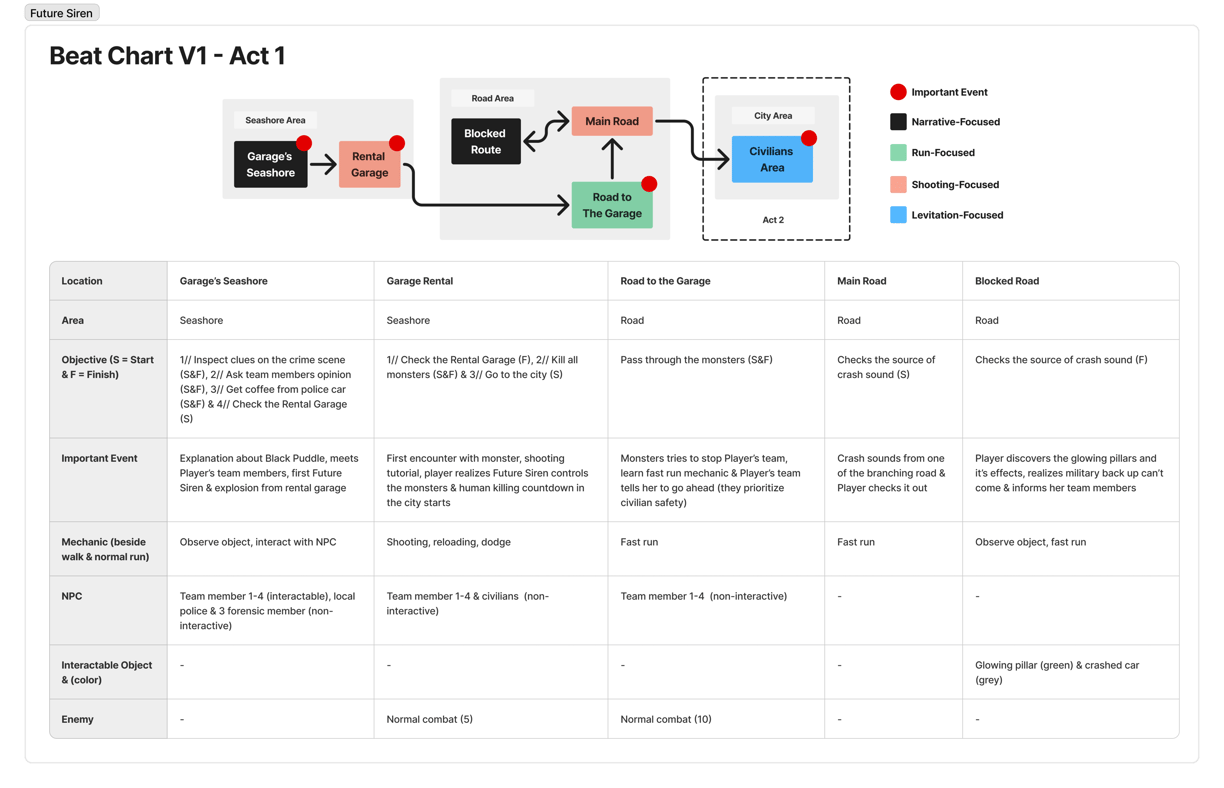


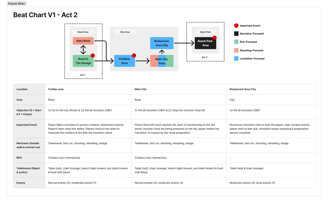

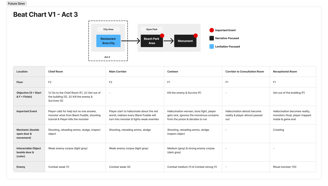
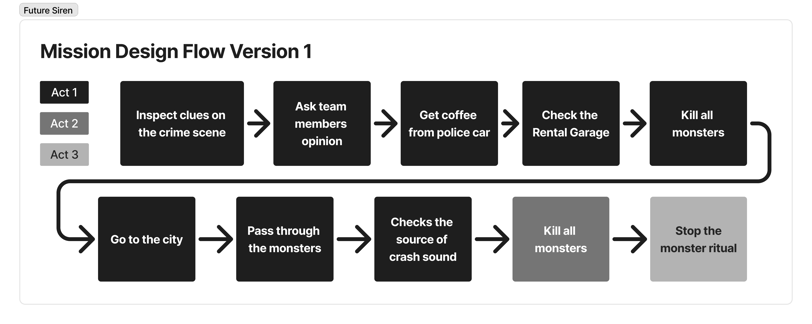

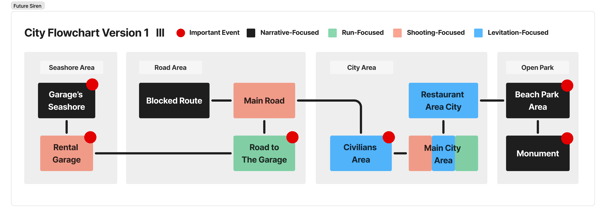


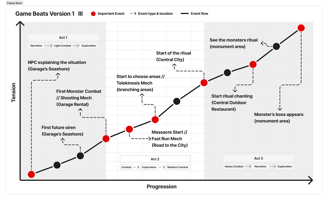
Area Flowchart Version 1
Game Beats Version 1
Beat Chart Version 1
Top-Down Sketches
Because a city has a bigger area than a building, the sketches are focused on exploring the layout of overall building shapes and roads. I made fewer alternative sketches than for the Black Puddle Project because I’ll focus more on iterating it in the blockout phase.
The final sketches for the three areas were decided by using the gradual elimination method with three criteria: how suitable the area layout is with area intention, explorable possibilities, and uniqueness.
Pardon the unrelated scribbles on the sketches, as I made them in my collective gamedev sketchbook.

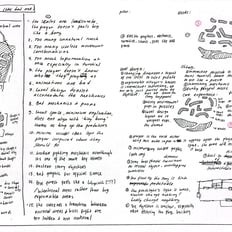
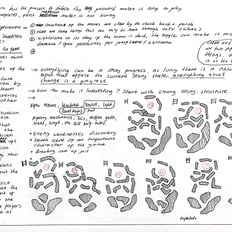

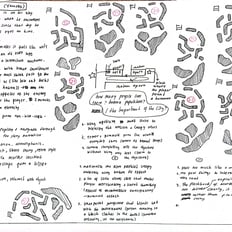
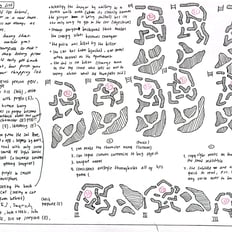
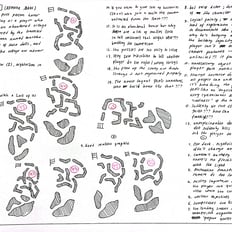
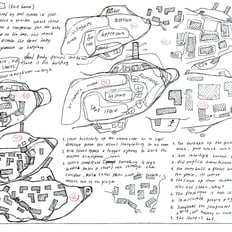
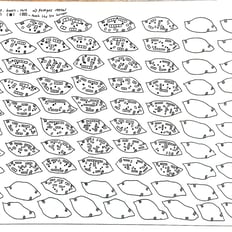
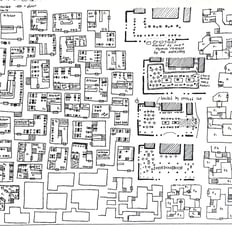
Low-Poly Props for Blockout
To reduce distraction from directly using final assets from Unreal Marketplace and Quixel Bridge, I made the low-poly version from the assets that I’ll be using in Blender with fbx format, then added the collision on Unreal 5.2.


Blockout Iteration Version 1
The final sketches were used as the baseline of the blockout. To make it accurate, I used real-life sizes of the buildings and roads for it. And the size of it aligns perfectly with the asset's size. Most of the time, I fully did the iteration and self-playtest in Unreal, but I also used Blender to make specific adjustments to the level.
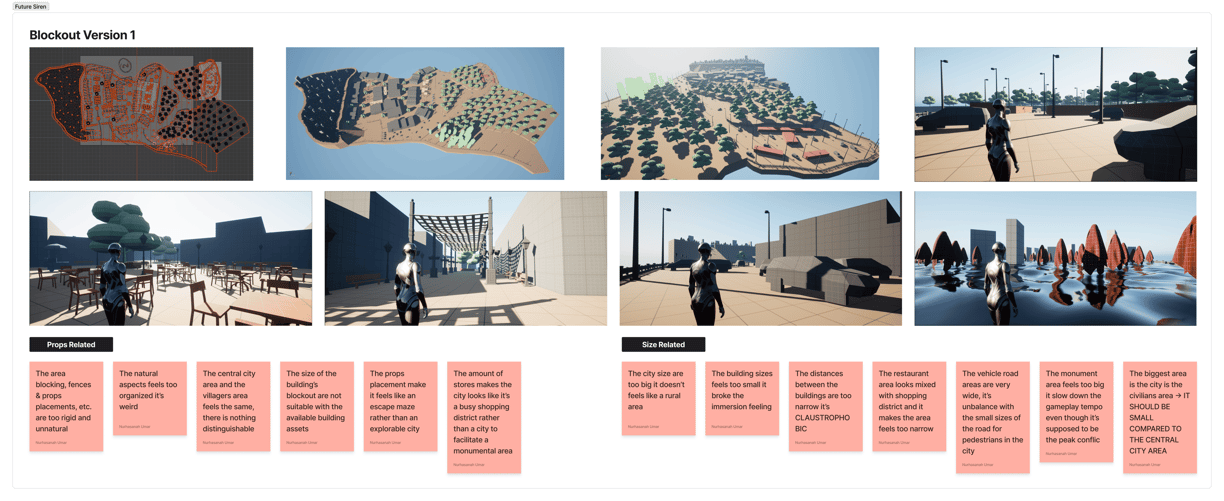

The final version of this iteration was okay when we were playing with usual movement mechanics, but if we were using fast-run mechanics, the area feels too small, and it breaks the illusion of the accurate scale of the world. The blockout also feels too to-the-point, like a cage, so players can’t do a lot of exploration even though it’s a big city. There are also no significant landmarks, so it’s boring to navigate.
The blockout can be better, but to maximize it, the change needs to come directly from the narrative to make the branching choices more impactful and distinguished. Because of that, a lot of narrative aspects in game writing are changed while considering the level design in mind.
Besides making new missions, I also made each branching route have a different gameplay style:
Main Road route = self-investigation & more focus on narrative
Musical Podium route = balanced combat & narrative
Path to The Central City route = speedrun & the hardest fight against the monsters
To make sure different routes have different combat experiences, I divided the city into smaller areas, categorized them based on the location, and assigned different types of gameplay to each of them. To prevent the player from doing combat in areas unrelated to their branching choice, the area exploration is one-on-one (they can't go back to previous areas), and there'll be collision walls between areas.
The massive changes in the branching route don't affect the story flow that much since it only changed where some of the events happened. So, in terms of story and narrative, the majority of the changes happened in the script.
Mission Flow Version 2


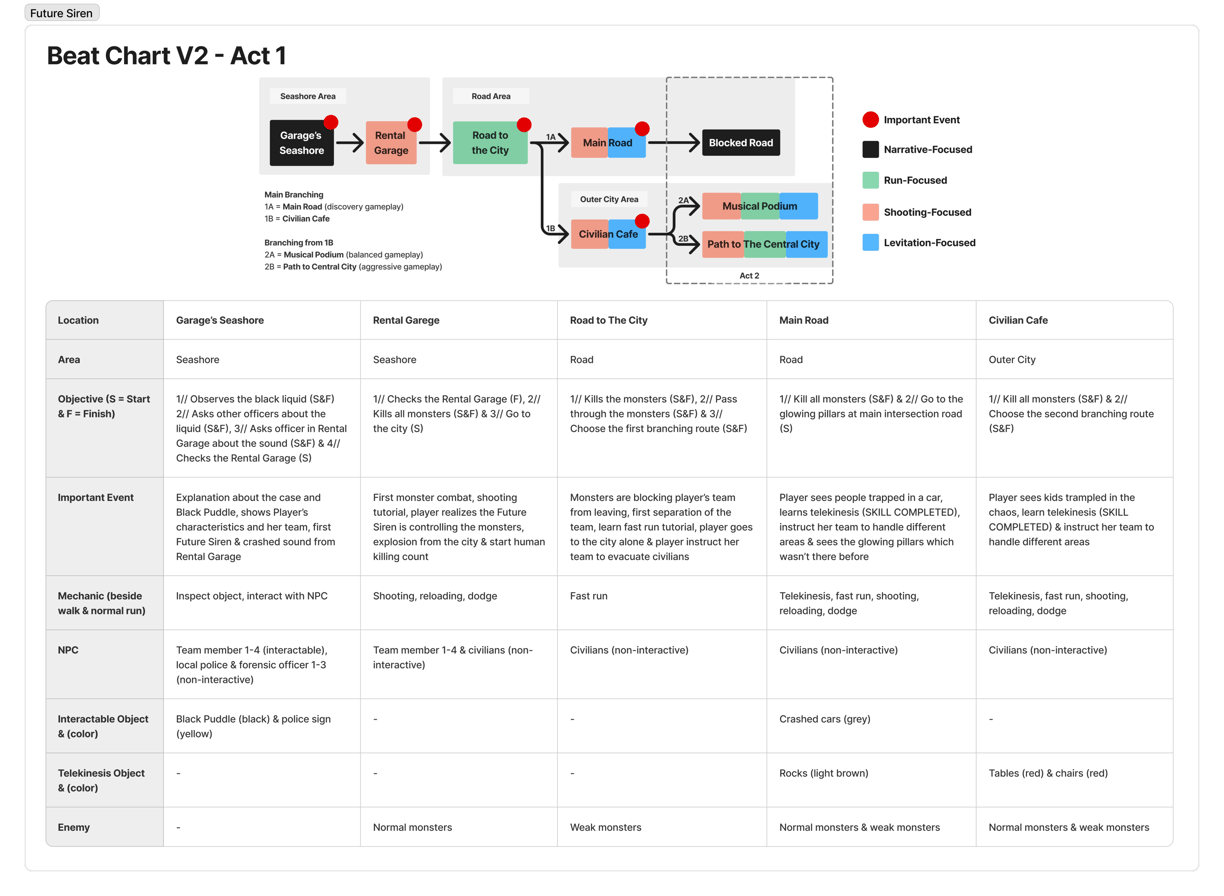

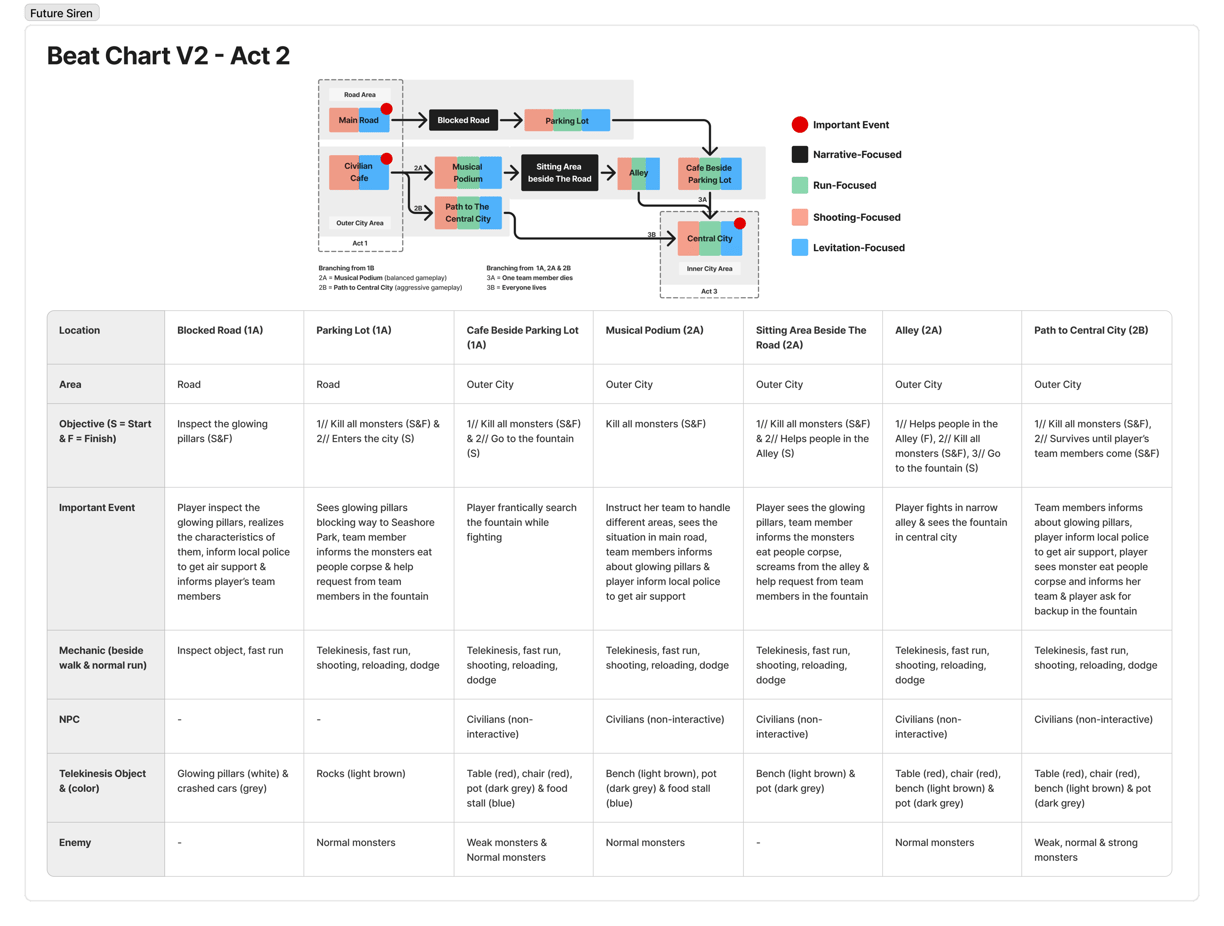

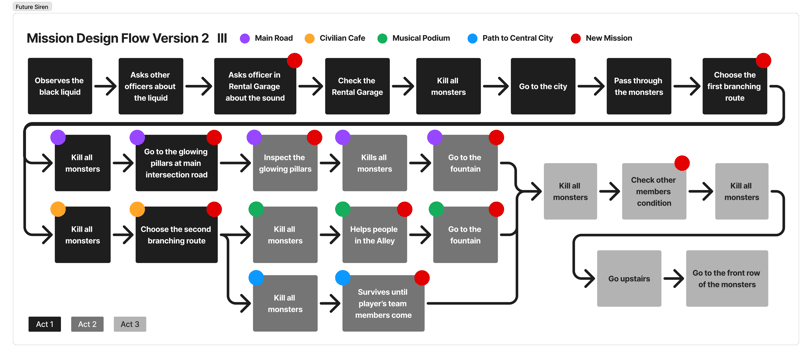

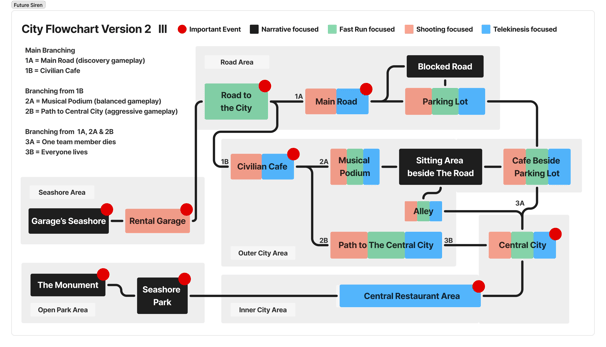

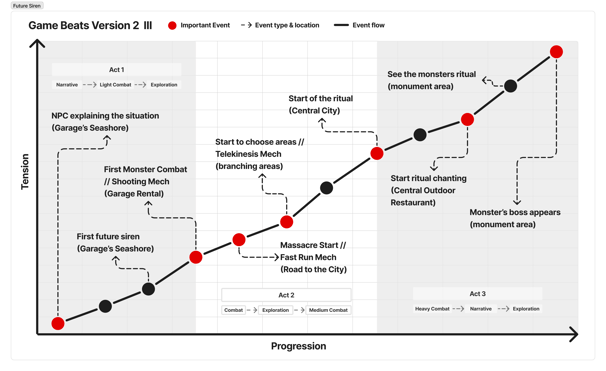

Area Flowchart Version 2
Game Beats Version 2
Beat Chart Version 2
Blockout Iteration Version 2
There are massive changes in this iteration, whether it’s functionally or aesthetically. This time, I tried to make it a lot less confusing and use more visual storytelling aspects throughout the areas. The green sticky notes are the solutions to the problems.
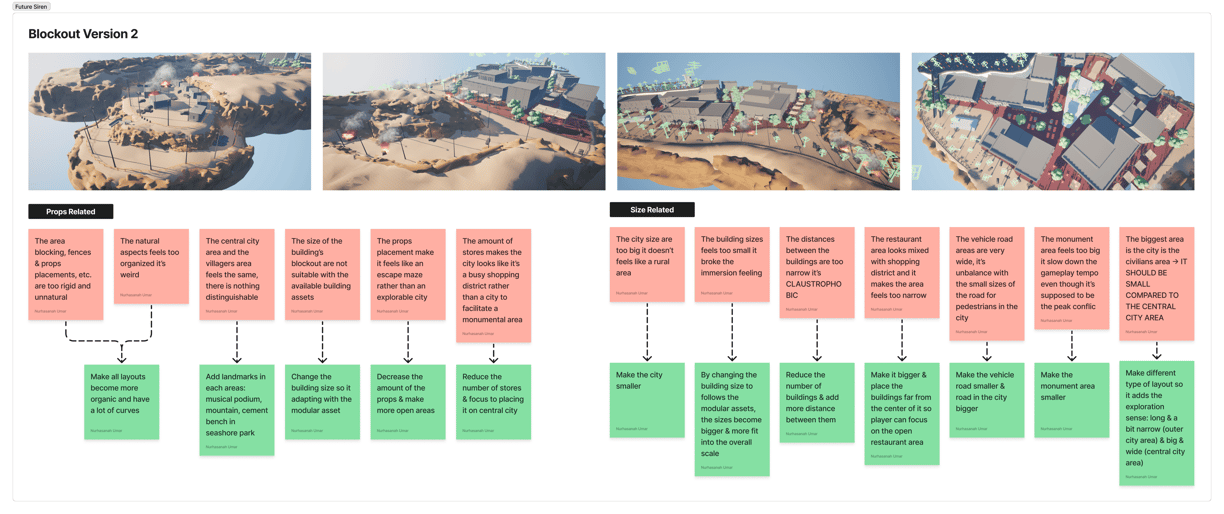

Getting Feedbacks From Friends
There are four respondents that I got the feedback from, and each of them has different specialty backgrounds and different kinds of feedback that I targeted. I did the interview one at a time and fixed the level based on feedback from the first respondent before continuing to the second respondent and so on, so there are 4 revisions in total before the final design was achieved. I also ask them to rank this project based on their area of expertise.


Final Blockout Breakdown










1A. Garage’s Seashore → It's designed to make the player focus on the Black Puddle and interact with NPCs so the visual environment is kept at a minimum.
1B. Garage Rental → First combat area, it shows the vigilance of the monsters & the responsibility to protect the civilian at all costs.
2A. Road to the City → This area is focused on increasing the urgency feeling & teaching the fast run mechanic, so it's designed to be gradually wider as the player approaches the city.
2B. (1A) Main Road → A rectangular combat area with crashed cars on the sides teaches telekinesis & encourages the player to use it instead of a gun so it doesn't shoot any civilians.
2C. (1B) Civilian Cafe → Square combat area with tables and chairs all over the place, teaches telekinesis & encourages the player to use it instead of a gun so it doesn't shoot any civilians.
3A. (1A) Main Road → A rectangular combat area with crashed cars on the sides teaches telekinesis & encourages the player to use it instead of a gun so it doesn't shoot any civilians.
3B. (1A) Blocked Road → It's the only place where the player becomes the one who encounters the glowing pillars, tells her team about it, and military backup can't come.
3C. (1A) Parking Lot → This area let the player do combat while navigating through the glowing pillars, so it increased the difficulty level without adding new monster variation.






4A. (1B) Civilian Cafe → Square combat area with tables and chairs all over the place, teaches telekinesis & encourages the player to use it instead of a gun so it doesn't shoot any civilians.
4B. (2A) Musical Podium → Players can do combat in the city area while seeing the road condition, so it's a balanced gameplay between visual narrative & combat.
4C. (2B) Path to Central City → Speedrun gameplay is because it's directly connected to the central city, so the combat is far more challenging and fast-paced compared to the other routes.
5A. (2A) Musical Podium → Players can do combat in the city area while seeing the road condition, so it's a balanced gameplay between visual narrative & combat.
5B. (2A) Sitting Area Beside the Road → Another balanced gameplay, the player fights the monsters, can see glowing pillars, & her team members go to the cafe area.
5C. (2A) Alley → An area before entering the central city, so it's deliberately made to be narrow to give a memorable transition when entering the spacious fountain area.
6. (2B) Path to Central City → Speedrun gameplay is because it's directly connected to the central city, so the combat is far more challenging and fast-paced compared to the other routes.






7. Central City → The biggest area with various props to provide optimum area for mixed combat gameplay & place where the player fights alongside her team members.
8. Central Outdoor Restaurants → Area for the last fight (fast-paced) purely using telekinesis, show the monsters come through portals, repetitive world transition & start of ritual chanting.
9A. Seashore Park → This place is focused on showing the anomalies of glowing pillars and the levitating cubics, which take over the area.
9B. Monument → This area is fully intended to show the peculiarities of the monster's ritual and gives a memorable finale before the game ends as an intro to Act 1.
Top-Down View
Perspective View
One Pager
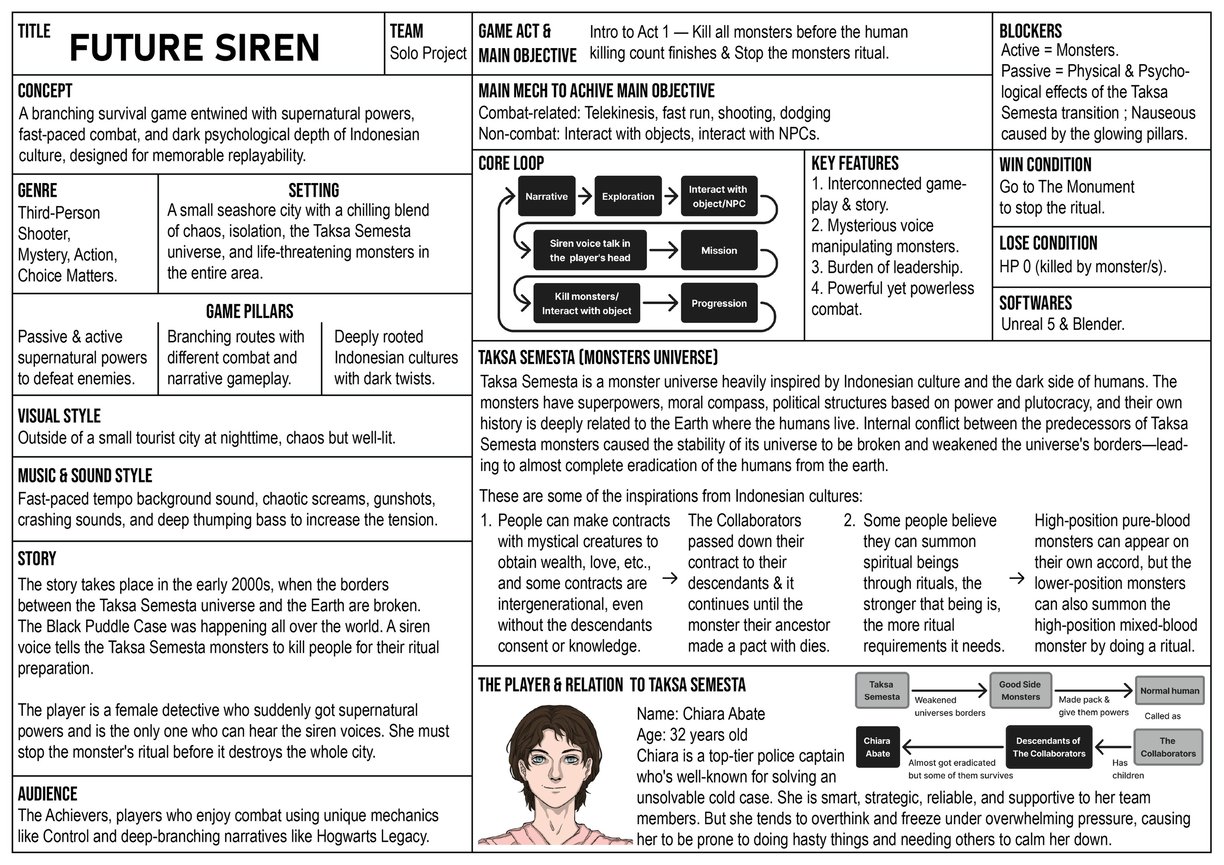

Things I’ve Learned
Gameplay experience is heavily affected by the game mechanic, especially if the game is combat-focused. Make sure to get used to them, especially those that relate to movements, since level design is making an interactive area. This way, the sizes, navigation, distances, etc., will be in tune with the mechanics and lead to fun gameplay experiences.
Real-life data (building sizes, road width, object placements, etc.) are valuable and can be used in the blockout. But in-engine POV often messed up with the scales and made it feel too small. Use the data as a baseline, keep iterating based on the playtest, and focus on making it feel right—not to exactly replicate them from real life.
Branching route = memorable gameplay experience in each route. To accentuate the narrative and story, try to make each route have contrasting explorable areas. It'll be better if we can accommodate different play styles with various tension build-ups, especially if the project has a wide variety of combat mechanics.
Human-made places that are built around nature tend to have more organic layouts because they adapt to the natural terrain. In the blockout iteration, you can use this data to make the nature first, then the civilization place later. Google Maps has a 3D terrain view that helps a lot with the workflow.
The problem with branching routes with different exploration areas is there are too many areas, and if we do it wrong, it won’t be memorable or distinguishable. To avoid it, use different landmarks and exploration area types so each one of them has its own uniqueness and is easy to recall from memories.
Navigation flow is incredibly important, and the level design must be built with it in mind. If the area is not intentionally designed to confuse the player (maze/puzzle/complex layout, etc.), make sure it’s easy to navigate to avoid any disorientation that’ll lead to frustration and irritating gameplay.
